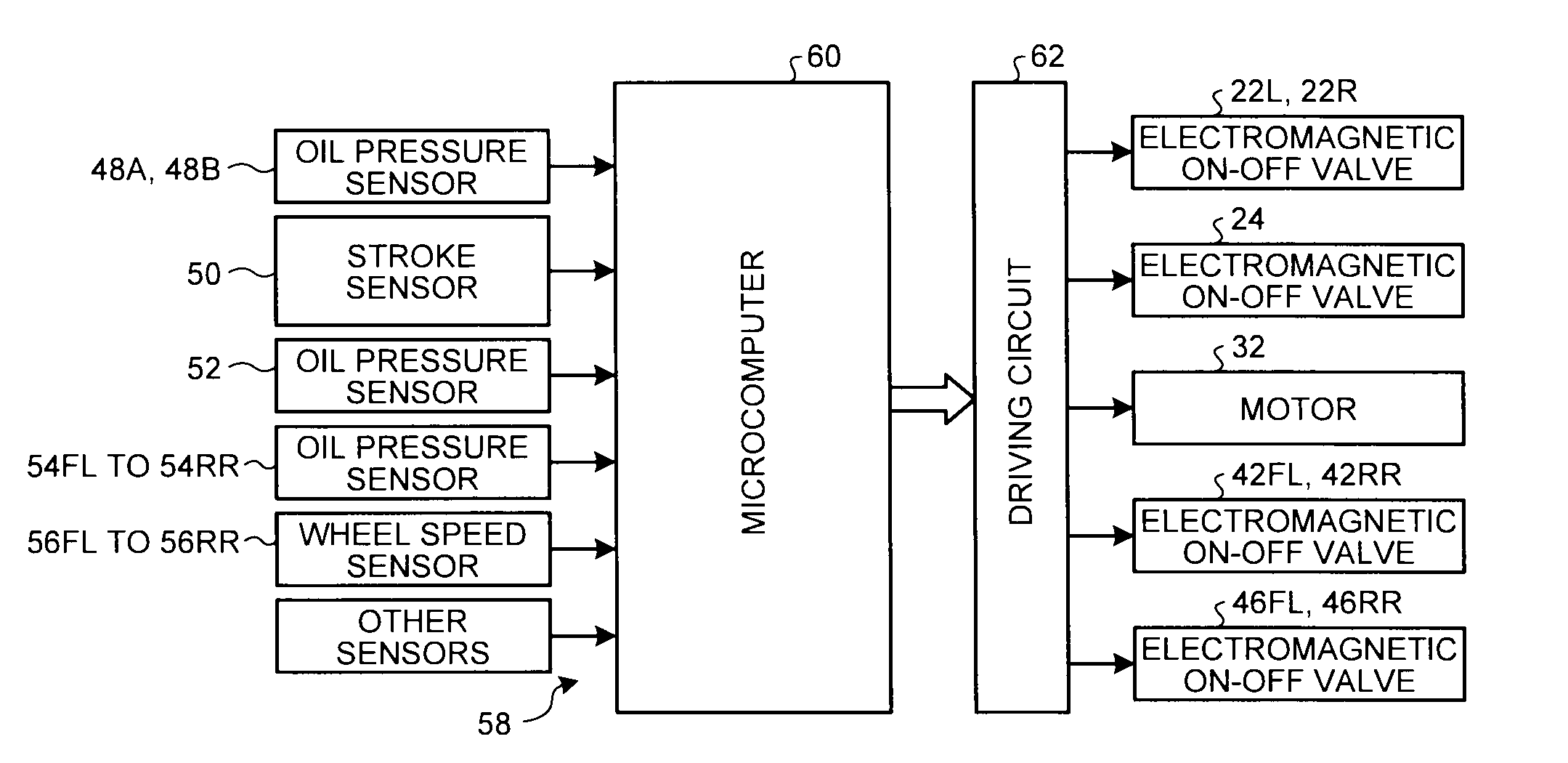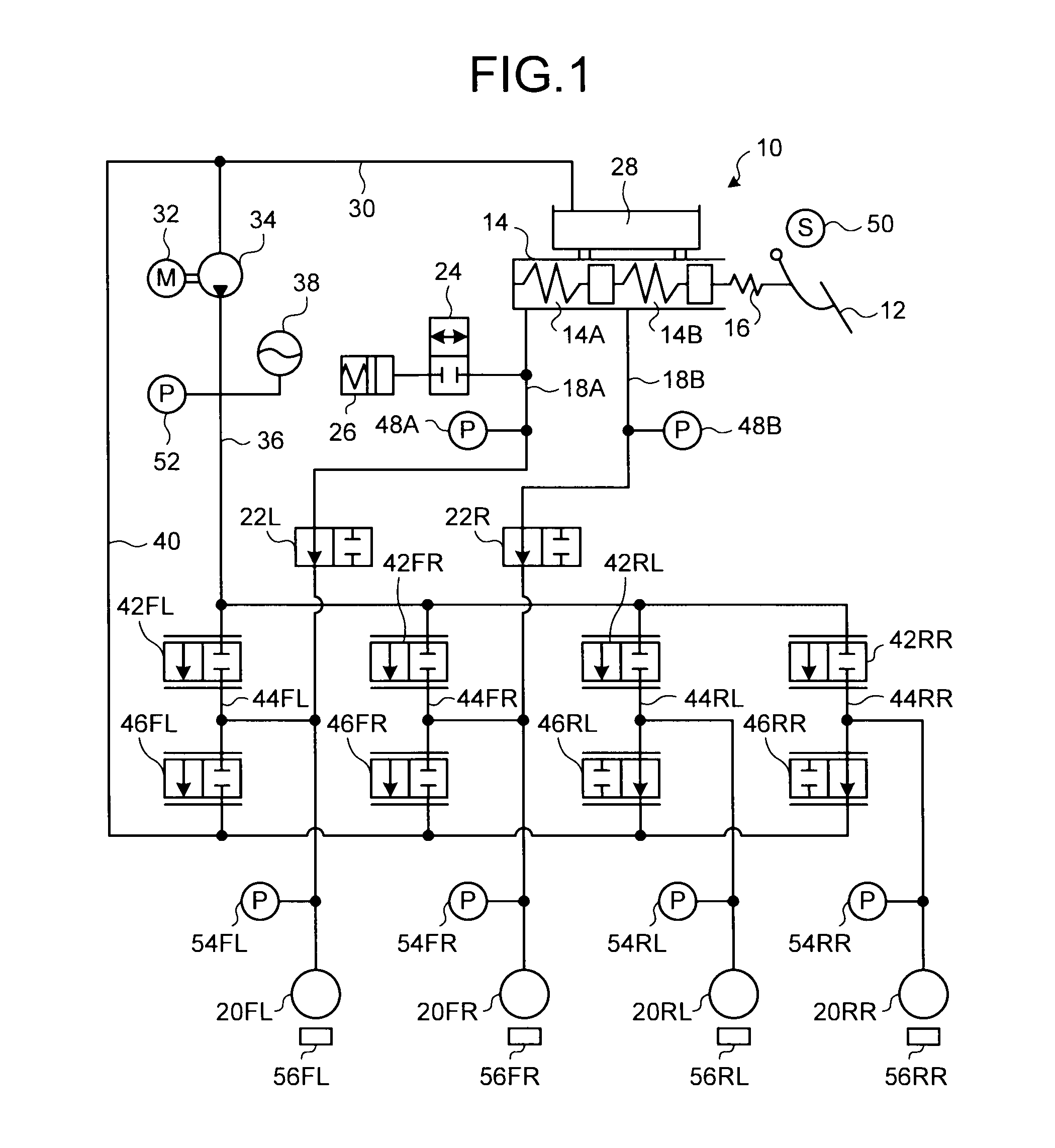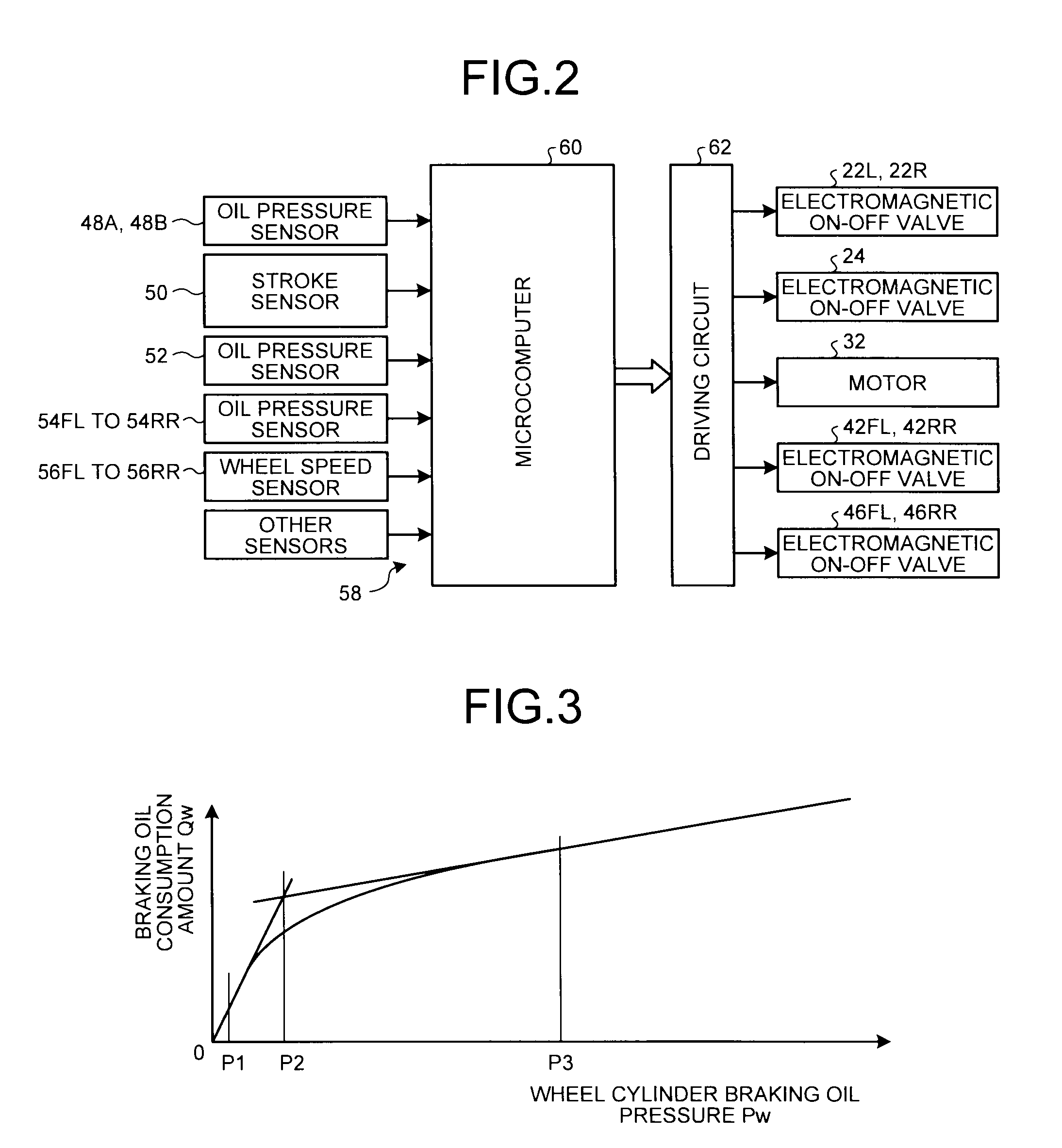Vehicle braking apparatus suppressing excessive slip of wheel during braking
a technology of braking apparatus and cylinder, which is applied in the direction of shock absorbers, hoisting equipment, instruments, etc., can solve the problems of limit the increase in braking power, and achieve the effect of increasing the braking oil pressure supplied to the wheel cylinder to achieve maximum braking performan
- Summary
- Abstract
- Description
- Claims
- Application Information
AI Technical Summary
Benefits of technology
Problems solved by technology
Method used
Image
Examples
first embodiment
[0071]A first embodiment of the present invention will be described below. FIG. 1 is an oil pressure circuit diagram illustrating an example of a vehicle braking apparatus according to a first embodiment of the present invention. FIG. 2 is a view illustrating an example of an electronic control unit included in the vehicle braking apparatus of the first embodiment. A braking apparatus 10 wholly illustrated includes a master cylinder 14 that pumps braking operating oil in response to a stepping-on operation of a brake pedal 12 by a driver. A dry stroke simulator 16 is provided between the brake pedal 12 and the master cylinder 14.
[0072]As illustrated in FIG. 1, the master cylinder 14 includes a first master cylinder chamber 14A and a second master cylinder chamber 14B, one end of a left front wheel oil pressure conduit 18A is connected to the first master cylinder chamber 14A, and one end of a right front wheel oil pressure conduit 18B is connected to the second master cylinder chamb...
second embodiment
[0095]A second embodiment of the present invention will be described below. A vehicle braking apparatus according to a second embodiment of the present invention differs from the vehicle braking apparatus of first embodiment in that the control is performed such that the rate of increase of the wheel cylinder braking oil pressure corresponding to the front wheel is decreased less than a rate corresponding to the rate of increase of the master cylinder oil pressure, that is, a pitching suppressing control (reduction control of the first embodiment) is executed when one of two different pitching suppressing control execution conditions is satisfied. Hereinafter, the pitching suppressing controls executed in the different pitching suppressing control execution conditions are referred to as a first pitching suppressing control and second pitching suppressing control. Because the basic configuration of the vehicle braking apparatus of the second embodiment is substantially identical to t...
third embodiment
[0109]A third embodiment of the present invention will be described below. A vehicle braking apparatus according to a third embodiment of the present invention differs from the vehicle braking apparatus of the first and second embodiments in that not only the pitching suppressing control (including the case in which the pitching suppressing control execution conditions differs from each other like the second embodiment) but also a brake assist control and a right and left distribution control can be executed. Because the basic configuration of the vehicle braking apparatus of the third embodiment is substantially identical to that of the vehicle braking apparatus of the first embodiment, the description is omitted.
[0110]The pitching suppressing control of the third embodiment is similar to that executed by the vehicle braking apparatus of the first embodiment and that executed by the vehicle braking apparatus of the second embodiment. In the pitching suppressing control, the rate of...
PUM
 Login to View More
Login to View More Abstract
Description
Claims
Application Information
 Login to View More
Login to View More - R&D
- Intellectual Property
- Life Sciences
- Materials
- Tech Scout
- Unparalleled Data Quality
- Higher Quality Content
- 60% Fewer Hallucinations
Browse by: Latest US Patents, China's latest patents, Technical Efficacy Thesaurus, Application Domain, Technology Topic, Popular Technical Reports.
© 2025 PatSnap. All rights reserved.Legal|Privacy policy|Modern Slavery Act Transparency Statement|Sitemap|About US| Contact US: help@patsnap.com



